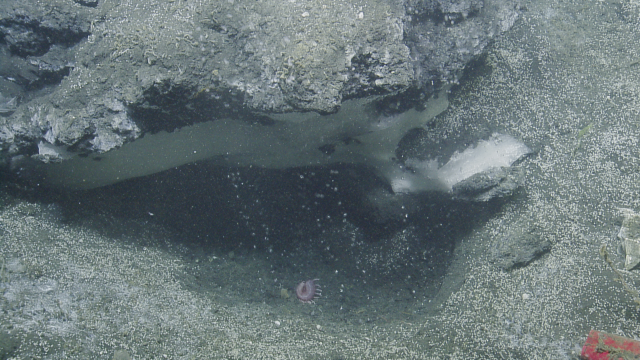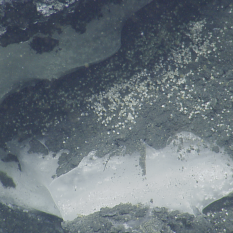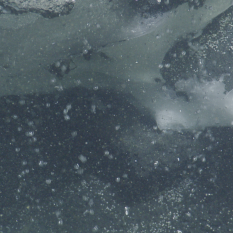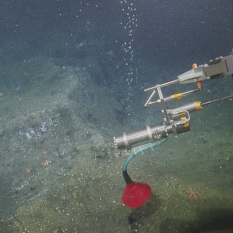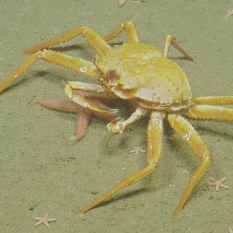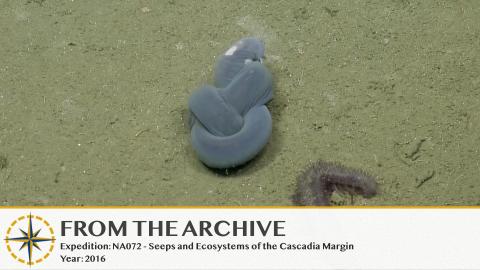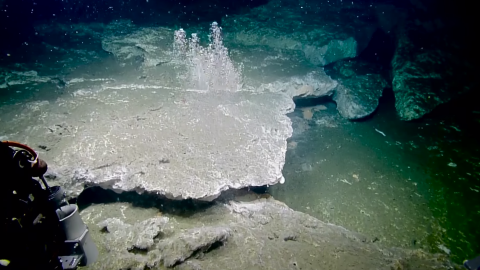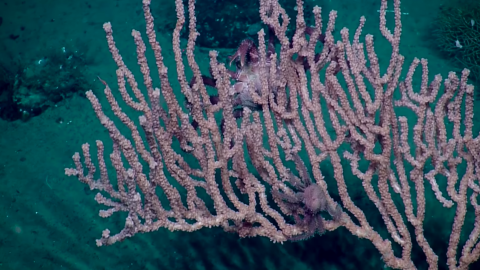Shimmering Seeps of Cascadia Margin
Deep off the Pacific Northwest coast in the Cascadia Margin, our team discovered over 500 shimmering methane seeps in the 2016 season. Partnering with NOAA Pacific Marine Environmental Laboratory, we are studying these geologically active seeps and their unique chemosynthetic communities.
Nautilus studied methane seep habitats along the length of the Cascadia Subduction Zone, from southern British Columbia to northern California. As habitats were identified with sonar mapping, the ROVs dived on these targets to investigate the structure and communities they support. Current research indicates warming oceans will rapidly change the stability of these seafloor gaseous reserves, which may in turn have large effects on oceanic dissolved gas concentrations and the release of greenhouse gases into the atmosphere. A well-explored baseline understanding of this dynamic ecosystem will be essential for understanding changes as they occur.
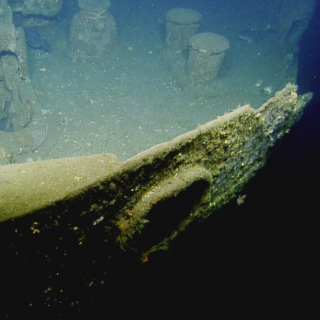
Seeps and Ecosystems of the Cascadia Margin
Methane is a powerful greenhouse gas and an important commercial resource that fuels many elements of our lives on land. Scientists are beginning to understand the complex and varied ways methane fuels life beneath the sea as well. Nautilus will study methane seep habitats along the length of the Cascadia Subduction Zone, from southern British Columbia to northern California.
